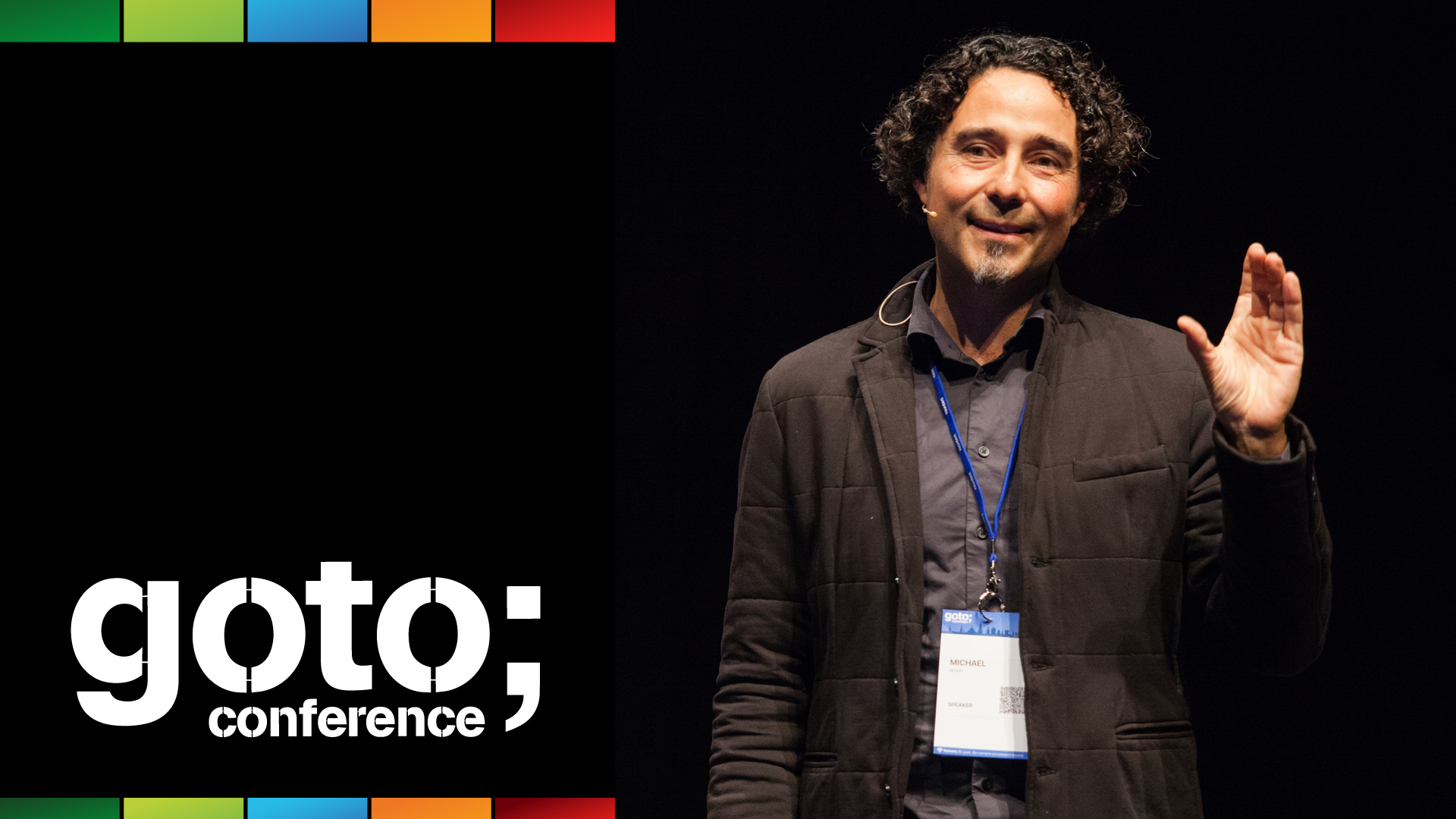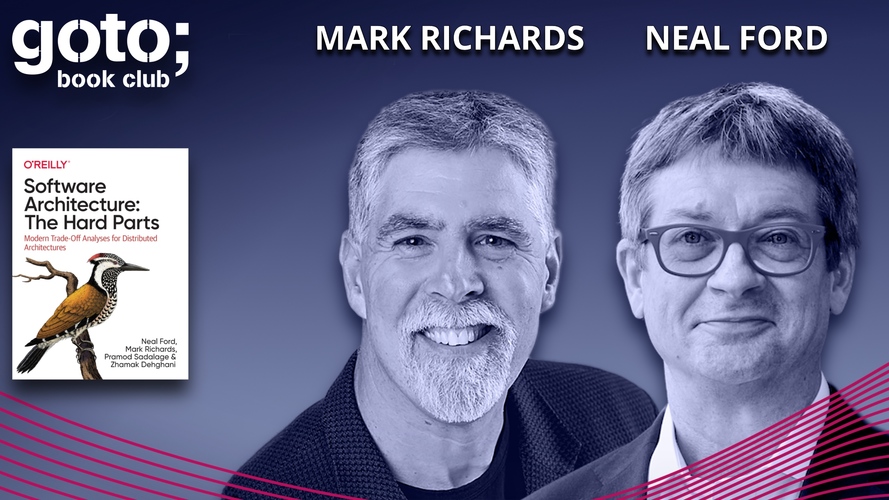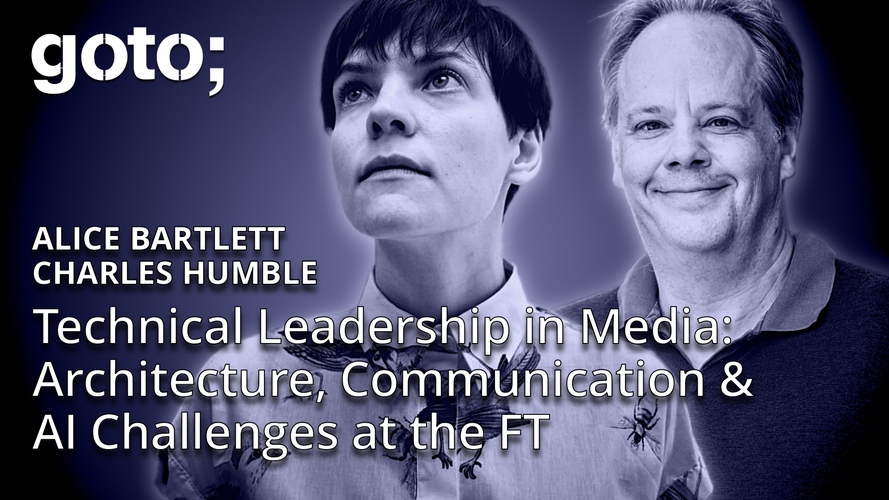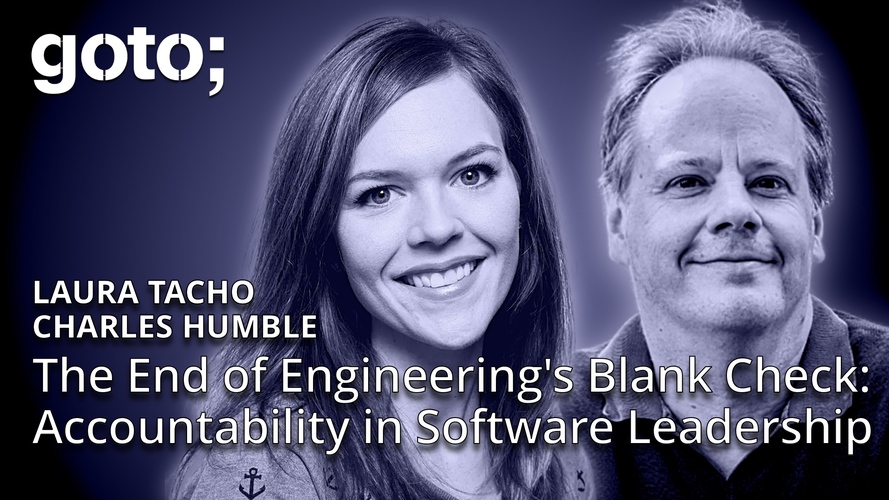(tech) teams

Calendars for Humans - How to Undo the All-day Cram

Software Architectures, Team Topologies and Complexity Science

Ramp Up, Fan Out: The Tools Spotify Uses to Onboard Engineers and Encourage Career Mobility

Attitude Determines Altitude: Engineering Yourself and Your Teams

SAFe CASE Study

Coaching Teams Through Team Change

Agility is Inefficient

The Development Metrics You Should Use (but Don’t)

Patterns of Effective Teams

Secrets of Effective Communication You Can Learn (from my Failures!)

The Different Perspectives needed for Self-organization

Scaling Engineering Teams

Politics & Hierarchy: How We Create It & How to Stop

Enabling Teams to Embrace Change

Stress & Depression – a Taboo in our Time

Death of The Spotify Model: On Radical Productivity Improvements at Enterprise Scale

Build Agility with Design Sprints

How Software can be Thought of as a Force for Good

Reflections on Re-architecting 2-tier to 3-tier

PopcornFlow: If Change is Hard, Make it Continuous

What Technical Leads Can Learn from Great General Managers Throughout History

Prioritizing Technical Debt as if Time and Money Matters

Space Shuttle

Is Business The Key To Making The World A Happier Place?

The 5 Pillars of Collaborative Product Ownership

Why Open Source Firmware is Important

The Happy Movement: How Business Is The Key To Making The World A Happier Place

Deprecating Simplicity 4.0

Prioritizing Technical Debt as if Time and Money Matters

Thinking Fast and Slow

Re-engineering Inclusion

Dynamic Reteaming at Fast-Growing Companies

People First Leadership

Fight, Flight, or Freeze — Releasing Organizational Trauma

Deprecating Simplicity 3.0

Journey of an Entrepreneur: the Story of a Product Startup from a Founder's Perspective

The Incredibles: Creating an Awesome PO Team

Build Agility with Design Sprints

Moving Fast at Scale

In Search of the Perfect Cloud Native Developer Experience

Mind as Code - Mindfulness for Developers and Knowledge Workers

Swearing, Nudity and Other Vulnerable Positions

CI/CD is just the Beginning: How to Optimize End-to-end Value Creation with the Flow Framework™

Refactoring Trust on Your Team

People First Leadership

This is Your Captain Speaking…” - Leading through Turbulence with Compassion and Confidence

The Coaching Leader & Architect

No Return: Beyond Transactions in Code and Life

Investigation and Creation of Software

Shortening the Architectural Feedback Loop

Build Agility with Design Sprints

Common Retrospectives Traps and Solutions

Agility at Scale: A Meeting of Mindsets

Talking With Tech Leads

The Development Metrics You Should Use (but Don’t)

Team Meetings That Don't Suck - Avoid Retrospectives Antipatterns

Diagrams as Code 2.0

After 20 Years of Agile - Will Mindful Become the New Agile?

Agility at Scale: A Meeting of Mindsets

Once Upon a Time in Agile

War is Peace, Freedom is Slavery, Ignorance is Strength, Scrum is Agile

In the Pursuit of the Best Developer Experience

Once Upon a Time in Agile

When It’s Time to Change, Then It’s Time To Change … A Talk on Adaptability

Bridging the Gap: How Data & Software Engineering Teams Can Work Together to Ensure Smooth Data Integrations

Technologists Around the Campfire: Social Audio as a Vector For Engineering Wisdom

The Sociotechnical Path to High-Performing Teams

"Zero Trust" is for Networks, Not Your Teams

Is Software Engineering Real Engineering?

More Buzzwords Won't Help: The Long History of DevOps Failures

Three Practices for Effective DevOps Adoption

How Work Works & Other Curiosities

Pillars of Async Communication

Pillars of Async Communication

How to Build a Consultancy People Enjoy Working for

Swearing, Nudity and Other Vulnerable Positions

Mind as Code - Mindfulness for Developers and Knowledge Workers

Talking with Tech Leads

Accelerated Learning: How Agile Can Help You?

Politics & Hierarchy: How We Create It & How to Stop

Coworking Spaces - a Journey through the Concepts with Destination Dream Space

Your Brain on Software Development

What Engineering Managers Should Do (and Why We Don’t)

The Language of Programming

Moving Fast At Scale

Riding Waves of Change: From Motorbike Novice to Career Crossroad

Riding Waves of Change: From Motorbike Novice to Career Crossroad

Adaptive Socio-Technical Systems with Architecture for Flow

Mob Programming: A Whole Team Approach

Riding Waves of Change: From Motorbike Novice to Career Crossroad

Pillars of Async Communication

From Hardware Hacker to CTO: Building Teams That Scale

Mind as Code - Mindfulness for Developers and Knowledge Workers

The Happy Movement: How Business Is The Key To Making The World A Happier Place

It's Getting Faster

Temporal Modelling

Attitude of Iteration

Turning Dreaming into Doing - A Life Manual for Nerds

Turning Dreaming into Doing - A Life Manual for Nerds

Turning Dreaming into Doing - A Life Manual for Nerds

Sales & Tech - Our Differences Make the Difference

Attitude Determines Altitude

Mob Programming: A Whole Team Approach

Legacy Evolution – The Innovation Opportunity!

Democratising Software Architecture

How to Reverse Software Entropy

Paving the Road to Effective Software Development

Dynamic Teams: Reteaming Patterns & Practices

Dynamic Teams: Reteaming Patterns & Practices

Building Bridges: From Developer to Developer Advocate

Professional Skills for Software Engineers

Sensible Defaults for Tech Management

Cloud Career Journeys

An Average Working Day on Visionary NASA Projects

One Rule to Rule Them All

Engineering You

Coal to Code: Developing Developers

Beyond Developer

One Rule to Rule Them All

One Rule to Rule Them All

Drinking a River of IoT Data with Akka.NET

Observability for Data Pipelines: Monitoring, Alerting, and Tracing Lineage

Ray: A System for Distributed Applications

Introduction to Real-Time Analytics with Apache Pinot

JVM Performance Engineering

What Every Programmer Should Know about How CPUs Work

Optimizing Performance of Stateful Applications for Globally Distributed Users

Maximizing Java Application Performance with GraalVM

Optimizing Cloud Native Java

Building a Real-Time Analytics Database: A 'Choose Your Own Adventure' Journey

Stop Punching Yourself in the Face

How to Lead your Organisation’s AI-transformation: Strategies, Skills, and Culture

How to Lead your Organisation’s AI-transformation: Strategies, Skills, and Culture

Lean Design Thinking

How to Lead your Organisation’s AI-transformation: Strategies, Skills, and Culture

How Architecture & Culture Go Hand in Hand

When the 'Truth' no Longer Matters

Scaling Engineering Teams

Coaching Teams Through Team Change

"Zero Trust" is for Networks, Not Your Teams

Dynamic Teams: Reteaming Patterns & Practices

More Buzzwords Won't Help: The Long History of DevOps Failures

The Sociotechnical Path to High-Performing Teams

Software-Defined Culture

Technologists Around the Campfire: Social Audio as a Vector For Engineering Wisdom

Keynote: Meeting Resistance and Moving Forward

Five Things Every Developer Should Know about Software Architecture

“Good Enough” Architecture part 1

“Good Enough” Architecture part 2

The Development Metrics You Should Use (but Don’t)

Talking With Tech Leads

Agility at Scale: A Meeting of Mindsets

Common Retrospectives Traps and Solutions

Build Agility with Design Sprints

Calendars for Humans - How to Undo the All-day Cram

Sales & Tech - Our Differences Make the Difference

"Zero Trust" is for Networks, Not Your Teams

Developer Productivity Panel

Your Brain on Software Development

The Science of Sleep

Developer Productivity With IntelliJ IDEA

Forget Velocity, Let's Talk Acceleration

When It’s Time to Change, Then It’s Time To Change … A Talk on Adaptability

Developer Productivity With IntelliJ IDEA

Developer Productivity With IntelliJ IDEA

40 Jenkins Features & Plugins You Wished You had Known about Before!

Why You Need a Software Delivery Machine

Small Steps Are the Fastest Way Forward: Life Beyond Agile & Scrum

Why You Need a Software Delivery Machine

Bridging the Gap: How Data & Software Engineering Teams Can Work Together to Ensure Smooth Data Integrations

It's a Noisy World Out There

One Rule to Rule Them All

The Sociotechnical Path to High-Performing Teams

Is Software Engineering Real Engineering?

How to Reverse Software Entropy

More Buzzwords Won't Help: The Long History of DevOps Failures

Shaping The Future of Developer Productivity with Backstage

Navigating Backstage: A Year in Developer Life

Building HTTP API SDKs that Really Are a Kit

Bringing Automation to Web App Hosting and Deployment

Mob Programming and the Power of Flow

Prioritizing Technical Debt as if Time and Money Matters

The 5 Pillars of Collaborative Product Ownership

Deprecating Simplicity 4.0

Embedded Application Development (for Web Developers)

Amazing Code Reviews: Creating a Superhero Collective

Lies, Damned Lies, and Metrics

Migrating Spring Boot Apps from Annotation-based Config to Functional with Kotlin

Mastering the Linux Command Line

Troubleshooting Tiered Tragedy: A Peek Into Failure

PopcornFlow: If Change is Hard, Make it Continuous

Building Evolutionary Infrastructure

In Search of the Perfect Cloud Native Developer Experience

Knowledge is Power: Getting out of Trouble by Understanding Git

Mind as Code - Mindfulness for Developers and Knowledge Workers

Work Less and Do More: Google Sheets for Developers

What Engineering Managers Should Do (and Why We Don’t)

Building Better Products Faster: DevUx is the New DevOps

Kubernetes Day 3: The State of Kubernetes Development Tooling

Modern Continuous Delivery

Introduction to OpenAPI

Building Resilient Frontend Architecture

Experiment to Innovate

Making Mutants Work for You

A Kick in the Butt for Developers #devemp

Moving Fast At Scale

Visualizing Cloud Systems

Doubling Engineering Productivity at eBay Through DevOps

Mob Programming: A Whole Team Approach

Why Business Cases are Toxic

Spotify Plugins for Backstage: How Commercial & Open Source Software Go Hand-in-Hand at Spotify

130 People with No Bosses. Too Good To Be True?

The Most Dangerous Phrase

How to Bake a Change

How Work Works & Other Curiosities

Socio-Technical Smells: How Technical Problems Cause Organizational Friction

How Work Works

Remote Working Approaches That Worked (And Some That Didn’t)

Why Most Data Projects Fail and How to Avoid It

Choose Your Own Adventure: The Treacherous Trek to Development

Future Skills - How to Foster IT Creativity

Optimizing Organizational Flow with Wardley Mapping & DDD

Keep Your Dependencies in Check

Riding Waves of Change: From Motorbike Novice to Career Crossroad

Riding Waves of Change: From Motorbike Novice to Career Crossroad

Layers of Leadership

Mastering Tech Leadership in 50 Minutes

Pillars of Async Communication

Pillars of Async Communication

Talking with Tech Leads

Become an Effective Software Engineering Manager

130 People with No Bosses. Too Good To Be True?

Keynote: From Heart of Agile to Guest Leadership

The Engineering-Manager Transition: How to take great Engineers and make them great Technical Leaders

Level Up: Choosing The Technical Leadership Path

How to Lead your Organisation’s AI-transformation: Strategies, Skills, and Culture

How to Build a Consultancy People Enjoy Working for

How To Lead Through Transformation in Tech

Level Up: Choosing The Technical Leadership Path

Sensible Defaults for Tech Management

Level Up: Choosing The Technical Leadership Path

How to Lead your Organisation’s AI-transformation: Strategies, Skills, and Culture

Insights on Leadership & Innovation

How to Lead your Organisation’s AI-transformation: Strategies, Skills, and Culture

Layers of Leadership

Why Open Source Firmware is Important

Cultivating Instinct

Pillars of Async Communication

Technical Leadership in Media: Architecture, Communication & AI Challenges at FT

Riding Waves of Change: From Motorbike Novice to Career Crossroad

Layers of Leadership


Become an Effective Software Engineering Manager

How to Avoid Failure in Your Agile Retrospective

Retrospectives Antipatterns with Aino Vonge Corry

The Best of GOTO Book Club Part One

Software Engineering at Google

Software Architecture: The Hard Parts

Behavioral Code Analysis: Why Is It So Hard to Write Good Code?

Conway's Legacy

The Challenges and Dangers of Digital Nudging

Architecture Modernization

Become an Effective Software Engineering Manager

How to Manage Your Manager

Sooner Safer Happier: Antipatterns and Patterns for Business Agility

Is Software Architecture Still Important?


Anniversary Edition of The Pragmatic Programmer

GOTO Book Club Yule Special

Software Architecture for Software Developers

Why Architectural Work Comes Before Coding

Software Engineering at Google

Software Architecture: The Hard Parts

Become an Effective Software Engineering Manager

How to Manage Your Manager

Next Generation Cloud System

Expert Talk: How to Deal with Hypergrowth

How Microteams Change the Way We Collaborate. Again.

Inclusion in the Workplace

Efficiency vs Effectiveness in Agile

Leveraging Our “Brains” in Software Development

How To Run a Successful Asynchronous Team

Can Top-Down Agile Work?

Global Himalayan Expedition

How Team Structure Influences Code Quality

How Team Structure Influences Code Quality

Driving Innovation with Kubernetes & Java

The Path to Becoming a Senior Engineering Manager

Tips and Tricks to Manage Stress as a Developer

How Our First On-Site Conference Since March 2020 Went

Expert Talk: gRPC, Kubernetes & .NET

Modern Software Practices in a Legacy System

How Architecture and Culture Go Hand in Hand

Fun is a Serious Business in the Workplace: Holly Cummins

Putting a Prompt into Production

Enhancing Productivity with Aesthetics, Tools, and AI

Tips to Prevent Burnout

Expert Talk: How to Deal with Hypergrowth

Fun is a Serious Business in the Workplace: Holly Cummins

Betty Enyonam Kumahor
The Cobalt Partners
Managing Partner at Cobalt Partners focused on frugal digital innovation

Matt Stratton
Aiven
Host of the Arrested DevOps podcast and Director of Developer Relations at Aiven

Eduardo da Silva
Independent Consultant on Sociotechnical Systems, Architecture, and Leadership modernization

Simon Rohrer
Saxo Bank
Global Head of Enterprise Tech Architecture at Saxo Bank

Marc Cohen
Building tools, demos, tutorials, and other educational artifacts to make computing and data science more accessible and inclusive

Rasmus Lystrøm
Microsoft
International Speaker and Chief Disruptor

Rasmus Lystrøm
Microsoft
International Speaker and Chief Disruptor

James Stanier
Spotify
Director of Engineering at Shopify & Author of "Become an Effective Software Engineering Manager"

Scott Shaw
Commonwealth Bank of Austra...
Crew Lead, GenAI Platform at Commonwealth Bank

Patrick Kua
patkua.com
Founder of the Tech Lead Academy

Eduardo da Silva
Independent Consultant on Sociotechnical Systems, Architecture, and Leadership modernization
Browse all tags
Here














































